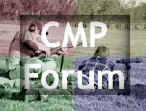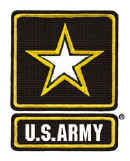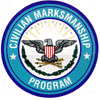

| We want your feedback! Please let us know what you think about TFS. Do you have an interesting story or article that you would like to share? If so, please let us know!
|
Reader Comments:
I use these articles in our high power clinics and have found them very helpful for both new shooters and reinforcement of the basics for the more experienced.
Thanks, Gary M.
Thanks for the great articles on the Carbine, Springfield, Garand matches. All the articles are interesting, but the Carbine, Springfield & Garand are my favorites.
Jim H.
The September-07 on line shooting tips by SSG Tobie Tomlinson, USAMU Service Rifle Team Member, is a great article. I have reproduced 15 copies of it to hand out and discuss to our “newbie” first year air rifle shooters on our high school JROTC Air Rifle Team. Come to think about it believe I’ll hand out a copy to my advance shooters as well. His explanations are simple to understand but rich in detail. Coupled with the sight pictures this article will go a long way towards helping all our JROTC shooters obtain better sight patterns. Keep up the great work. AND…..keep the articles like this coming.
Malcolm V.
CW2 (R), US Army
It seemed good to read the article on Infantry Trophy Match. As a shooter on the Marine Corp Team way back in 1967 I participated in the Match. We were the second team for the Marines but placed second overall. One of our shooters forgot to put the windage on his rifle. I enjoyed shooting the M-1 and M-14 at Camp Perry and always wanted to go back but never seemed to find the time. The top over all shooter at that time was my team mate Lt. Bowen. I remember some of the team members carrying him from the 600 yd line back to the rest of us. It was a great time in my life and will never forget it. Thanks again for the article.
Mike A.
Thanks for the great series of articles from the USAMU – they are very readable, and usable!
Tom, AZ
Great articles. Great to identify those who are participating as well as those who are working behind the scenes to make the whole of the National Matches run so well.
David D.
Boxford, MA
This is a special note just for my friends at the CMP, I want to thank you all for your hard work and attention to details, it's a great program!
"You help our shooting dreams come true!"
Best Regards,
Tony M.
CMP,
Your review of the CMP EIC brought back good memories. My son and I usually participate in the rifle event. This was the first time we participated in the pistol event. Our experience was positive and we have decided to come back and do it again next year!
DAVE J. H.
I don't think that I have taken the time lately to thank you and the CMP for your faithfulness in keeping me updated on all of the CMP news. I thank you and your staff very much for the fine job you are all doing.
Many thanks, and keep up the great work!
Pete
Your article titled "Rifle Cleaning and Maintenance" was so timely. I am a novice rifle shooter, and the information is just what I needed. The owner's manual that came with my rifle is far too sketchy and assumes the new owner is experienced. This is concise yet detailed enough to make me comfortable cleaning my firearm.
Regards,
Jane W.
Cleaning a rifle or handgun is not a lot of fun. The article on cleaning the rifle met the K.I.S.S. principle that I can relate to and understand. To the point.
Arthur S.
Thank you for this excellent e-newsletter. The links and information are great.
Sincerely,
John B.
|
|
|
 |

Physical Conditioning for Highpower Shooting
By SGT Walter E. Craig
|
 |
In most sports, body conditioning is an absolute necessity. For example, the need to condition the body to improve strength or speed is obvious for sporting activities such as football, track, or swimming. Conversely, for most civilian highpower shooters, the need to condition the body to maximize shooting performance is generally not a priority. However, body conditioning is very critical to good shooting.
A training program that is designed to improve shooting skills is essential for maximizing shooting performance. An individual would not enter a long distance race, without first spending many hours conditioning his/her body. One should apply the same conditioning philosophy to the sport of shooting. In shooting, the human side is
even more important than equipment, in achieving maximum shooting performance. Therefore, physical conditioning to improve shooting skills will result in better shooting performance.
Conditioning the body to improve performance must be directed toward the required skills
for a specific activity. In shooting, the body must be able to hold a 10-15 pound rifle steady long enough for the bullet to exit the muzzle without disturbing sight alignment or sight picture. From the moment that the brain tells the finger to squeeze the trigger, to the exact moment that the bullet exits the muzzle, the brain, eyes, and muscles must be coordinated to prevent any undesired body movement. Although the body conditioning requirements for the shooting activity just described may seem small when compared to the same requirements for playing football, body conditioning for shooting is extremely difficult. The major conditioning requirement for shooting involves the precise coordination of mental, muscle, eye, and nervous system functions. Also, when shooting, it is extremely important to keep all body functions as calm as possible in order to prevent the body from moving or wobbling. This places an extreme demand on the body that is unique in the sports world.
The objective of an individual physical training program is to condition the muscles, heart, and lungs thereby increasing the shooter's capability of controlling the body and rifle for sustained periods without experiencing fatigue. The ultimate level of endurance must be determined by the individual shooter.
The following physical condition characteristics are desirable for the competitive marksman.
-
Control of an optimally developed muscle system; too much muscle is a hindrance, as is an underdeveloped skeletal muscle system.
-
Endurance to fire over long periods of time without lowering scores. -
Highly efficient heart and lung system.
Skeletal Muscle System
A modest weight lifting program that is continuous throughout the shooting season is an excellent way to strengthen and tone the muscles. For most individuals, a whole body workout, consisting of 2-3 sets per body part, performed on Monday, Wednesday and Friday is adequate. Start with small weights and increase weight gradually from week to week. Use just enough weight to produce a light to moderate burn within a 12-15 rep range. Train muscle groups in the following sequence; chest, back, shoulders, biceps, triceps, quads, hamstrings, calves and abdominals. It sounds like a lot, but once
you are familiar with the exercises and have them set up, the workout should be 45 minutes or less. Specific exercises should be kept to basic compound multiple joint movements, especially for beginners.
In summary, a workout should include a few minutes of stretching, 5-7 minutes on a stationary bike to elevate the core temp and heart rate, followed by a weight routine, moving into a cardio workout (stair stepper, elliptical, etc.) and ending with a light stretch. Be careful to move with a purpose until the completion of the workout. Often people start strong and motivated only to be derailed by unrelated conversation. Becoming intensely focused on the individual workout and specific goals is highly recommended. The purpose of the weight training is not to become muscle bound, but to tone the muscles to increase strength and stamina. Keep the mind centered, practice visualization and concentration techniques.
Endurance to Fire for Extended Periods
In order to develop the muscles necessary for holding a rifle for extended periods of time, some type of holding drill is recommended on Tuesday, Thursday and Saturday. If access to a range is possible, it is hard to beat a blind standing exercise. This exercise consists of dry firing one round, then live firing one round, at a 200 yard standard
SR target. For those who have access only to a 100-yard range, reduced targets will work as well. If scheduling permits, make it a point to train on some days when the weather is marginal in order to prepare for those less than perfect days at Camp Perry.
Begin the exercise with a timer set for 50 minutes. Dry fire one round, then fire one live round and without looking at the actual impact, plot a call in a data book. Continue the dry fire/live fire sequence for 20 rounds, plotting after each round. After firing is complete, compare the data book to the target. If
your zero and position are solid, the plots should resemble the target. As the training days add up and
your zero is refined, the groups will shrink and move to the center, while you simultaneously develop the muscles necessary
to holding the rifle steady. As a result, there will be an increase in stamina as well as accuracy.
If no range is available, then indoor dry fire training is recommended. Mark a 3x5 index card with a 3/8 inch dot and place
it at a distance of approximately 18 feet. Make sure the card is well lit to
give a realistic sight picture. The workout consists of holding the rifle for one minute then resting for one minute. Continue this sequence for at least 20-30 minutes. Once endurance starts to build, a little weight may be added to the
rifle. Also, increase hold time and/or reduce rest time to 30-45 seconds, but no less. An extra section of lead can be added into the hand guard just for this exercise and then removed when firing.
Cardiovascular/Respiratory System
To remain relaxed while shooting, the heart must be at a slow idle. Individuals whose cardiovascular and respiratory systems are in good shape will be able to keep the engine’s speed slow under high pressure conditions. Shooting under pressure causes the heart to pump faster because of the added tension placed on the body. If the pulse rate is above normal under no pressure situations, then it is likely to accelerate while shooting. As the heart rate increases, so does
breathing. Higher breathing and heart rates are counterproductive to achieving maximum shooting performance. Therefore, a physical conditioning program designed for shooting, must include exercises to improve the cardiovascular and respiratory systems. These systems can be improved by performing various aerobic exercises, such as jogging and swimming regularly. Members of the USAMU jog about 1.5 - 3.0 miles per day, five days a week,
during the shooting season for cardiovascular and respiratory conditioning. Training during the most uncomfortable time of day, for a couple of days a week, is also recommended. This
means training in environmental conditions that will most likely be present during competition.
This causes the body to adapt even more. Many civilian shooters suffer from heat and/or humidity related issues due to a lack of training.
Individuals working in a climate controlled environment during the work week must be creative, determined and diligent in order to find ways to place themselves into an uncomfortable environment to force further adaptation. When peak performance is desired in extreme conditions, training intensity, combined with nutrition
and maintaining hydration on the range, maintaining stable blood glucose levels by consuming
proper meals and snacks (from a low to moderate glycemic load) and adequate sleep pays huge dividends.
An individual in good condition can withstand more stress during a competitive situation. Improving muscle tone
and the cardiovascular and respiratory systems will help in coping with a stressful situation. One of the best ways to ease a nervous condition is to get in good physical shape. Relaxing on the firing line can be accomplished by keeping the pulse rate at a moderate level and by proper breathing. Many techniques that are used to control tension involve a combination of breathing and meditation exercises. If nervousness occurs on the firing line, then inhale and exhale deeply and slowly prior to shooting. A two second inhale, combined with a two second pause, followed by a long six to eight second exhale, works well to control the pulse. Breathe, using the count of one-thousand one, one-thousand two etc., clear the mind of any distractions or outcome based thoughts of performance and focus only on the individual shot process at the present moment. The results will speak for themselves. During the shooting event, breathe normally and concentrate solely on the motions of shooting. With a little practice, this exercise and keeping in good shape will reduce tension and aid relaxation while shooting.
In summary, conditioning the body to improve the functions required for shooting will result in improved performance. The sacrifice, dedication, and work required to become a champion are
significant. An individual desiring to become a champion must prioritize the conditioning of his/her body to provide sustained peak performance under a variety of conditions. It is strongly recommended that a competitive shooter start a dedicated training program
that includes the elements described in this article to enhance individual strengths and minimize weaknesses. The guaranteed benefits will be an improvement in shooting
scores, in particular, more consistent scores under a broad spectrum of conditions from optimal to extreme.
|
The USAMU Service Rifle Team is also answering your
questions pertaining to Service Rifle Shooting including topics such as
Equipment and Ammunition, Shooting Positions and Shooting Techniques and
Tactics. Go to
http://www.odcmp.com/Competitions/USAMU/ShootingTips.htm
to view the latest questions and answers. If you have a question you
would like to ask, email USAMU@odcmp.com. |
NEXT
ARTICLE |
|
|


